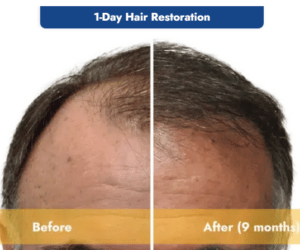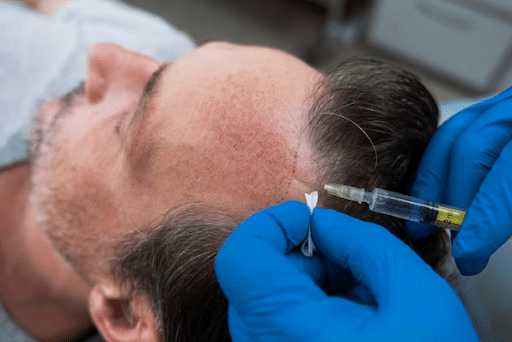What is Artas Hair Transplant?
In the world of hair restoration, the Artas Hair Transplant system has emerged as a frontrunner, revolutionizing the way we approach hair loss. This advanced, robotic procedure stands apart from traditional methods, offering precision and results that were once unimaginable.
Artas combines sophisticated robotic technology with detailed algorithms to identify and select the best grafts from the donor area. This minimally invasive process ensures a natural-looking hairline, making it a sought-after solution for those battling hair loss. Unlike traditional methods, Artas is known for its accuracy, consistency, and reduced recovery time, marking a significant advancement in hair restoration techniques.
How Does Artas Hair Restoration Work?
The Artas system is a marvel of medical technology, blending robotics, imaging, and precision mechanics. It starts with a detailed mapping of the patient's scalp using advanced digital imaging. This mapping allows the system to identify and select optimal hair follicles for transplantation.
During the procedure, the Artas robotic arm, guided by the physician, precisely harvests individual hair follicles from the donor area. This process is minimally invasive, leaving no linear scar and ensuring a quicker recovery compared to traditional methods. The harvested follicles are then transplanted into the thinning areas, and meticulously placed to create a natural and dense hairline.
The precision of Artas lies in its ability to maintain the integrity of each hair follicle, ensuring a high survival rate post-transplant. This level of accuracy not only improves the aesthetic outcome but also maximizes the use of available donor hair.
Benefits of Choosing Artas for Hair Transplant
Choosing Artas for hair transplantation comes with numerous benefits:
Minimally Invasive Procedure:
Unlike traditional methods, Artas doesn't require large incisions, reducing recovery time and discomfort.
Precision and Accuracy:
The robotic system's precision minimizes the risk of damaging existing hair, ensuring optimal results.
Natural-Looking Results:
Artas provides a more natural hairline, thanks to its ability to carefully select and place each follicle.
Reduced Recovery Time:
Patients typically resume normal activities more quickly, thanks to the minimally invasive nature of the procedure.
Customizable Outcomes:
The system allows for a highly customized approach, tailoring the hairline to each patient's preferences and facial structure.
Understanding who can benefit most from this procedure is crucial in assessing its suitability for individual cases.
Who is an Ideal Candidate for Artas Hair Restoration?
Ideal candidates for Artas hair restoration typically include:
- Individuals experiencing male or female pattern baldness.
- Those with sufficient donor hair on the back or sides of their scalp.
- People seeking a minimally invasive hair restoration solution.
- Individuals in good general health.
It's essential to consult with a specialized physician to determine whether Artas is the right choice for your specific condition and hair restoration goals.
What Results Can You Expect from Artas Hair Transplant?
Patients undergoing Artas hair transplant can expect significant improvements in hair density and appearance. The results are gradual, with new hair growth typically noticeable within three to six months post-procedure. Full results can take up to a year, as the transplanted hair grows and blends seamlessly with the existing hair.
Before and after images of Artas patients often showcase transformative results, with a noticeable increase in hair fullness and a natural-looking hairline. The long-term success of the procedure is high, with many patients enjoying permanent hair restoration benefits.

Artas Hair Transplant and Restoration offers a cutting-edge solution to hair loss, blending technology with precision to deliver natural-looking results. If you're considering this procedure, consult with a qualified physician to understand how Artas can be tailored to your unique hair restoration needs.


